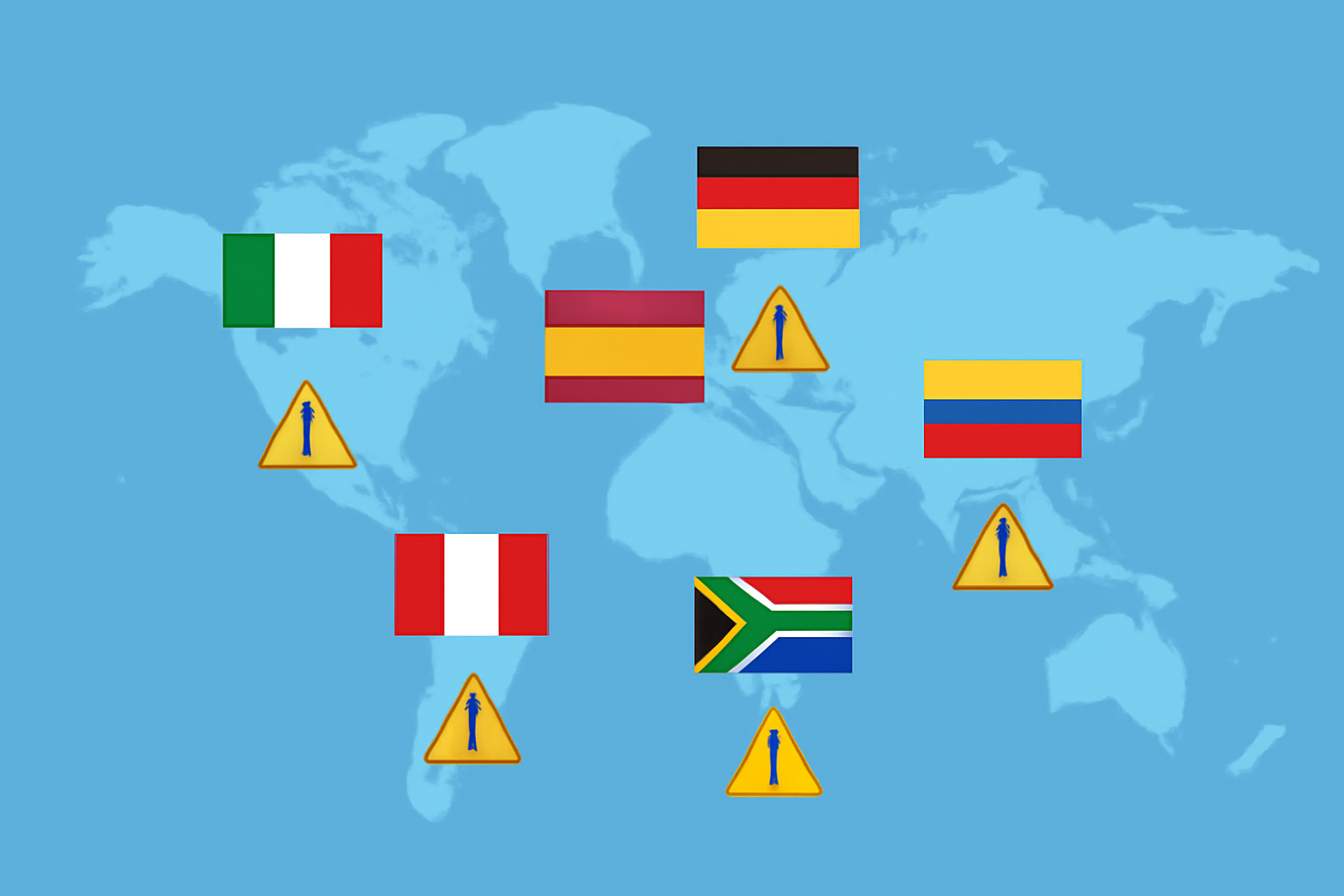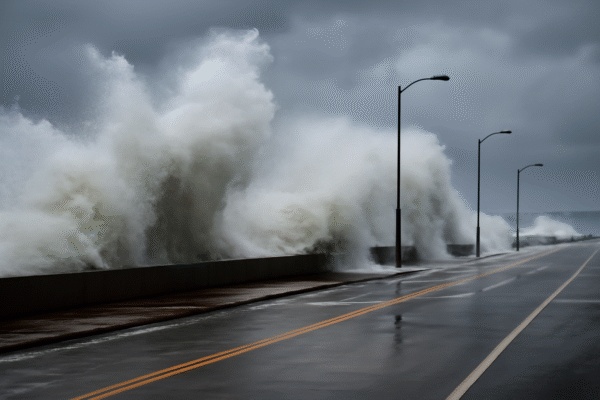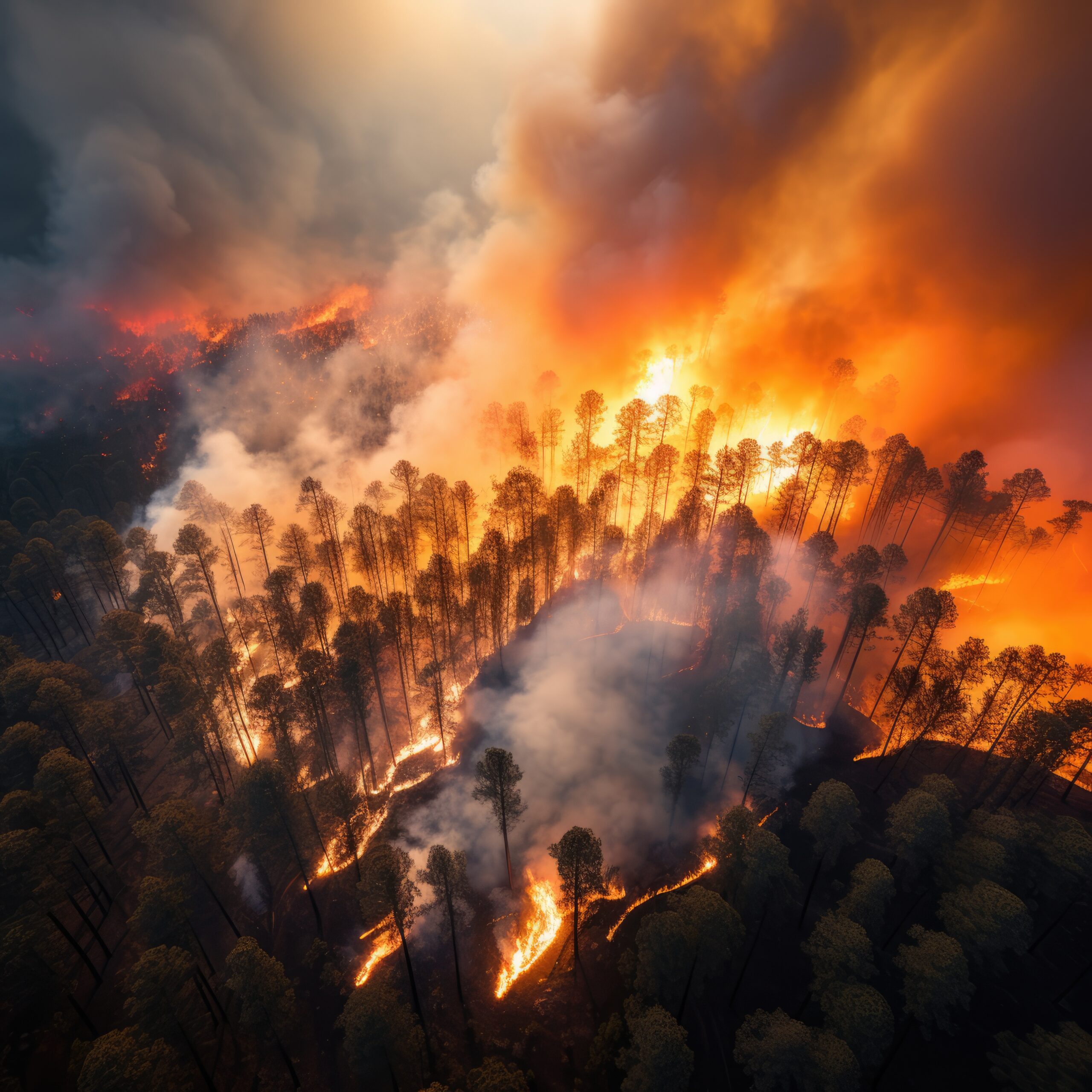California’s Madre Fire, which ignited on July 2 near Highway 166 in the Los Padres National Forest, has now engulfed over 80,000 acres, creating a transportation crisis and halting much of the region’s tourism. As of Monday, only 30% of the fire is contained, forcing widespread evacuations and upending daily life across San Luis Obispo and Santa Barbara counties.
With highways closed, flights grounded, train services suspended, and tourist sites shuttered, the wildfire is emerging as one of the state’s most disruptive disasters in recent years.
Highway Closures and Road Disruptions Bring Central Coast Traffic to a Standstill
The California Department of Transportation (Caltrans) has closed a major portion of Highway 166, the central artery connecting Santa Maria to New Cuyama, stretching from U.S. 101 to Perkins Road in Santa Barbara County. The shutdown has rerouted thousands of vehicles through limited local roads, resulting in heavy congestion and hours-long delays.
Dense smoke, falling ash, and limited visibility have made driving conditions dangerous, and authorities continue to urge motorists to avoid the region unless absolutely necessary. Firefighters are working around the clock to remove debris and secure escape routes for emergency response vehicles.
Flights Delayed or Cancelled at Regional Airports
Air travel has also taken a severe hit. With the skies over Santa Maria Public Airport and San Luis Obispo County Regional Airport (SBP) cloaked in wildfire smoke, several regional flights have been cancelled or delayed.
Although no airports have officially closed, airlines are operating with extreme caution, citing poor visibility, changing wind conditions, and hazardous air quality as ongoing challenges.
Travelers booked on flights to or from the Central Coast are urged to check with their airlines frequently, as schedules may change without notice based on real-time assessments from aviation and weather authorities.
Amtrak Services Halted in Fire Zones
Amtrak’s Pacific Surfliner and Coast Starlight lines, both serving routes through San Luis Obispo County, have experienced partial suspensions and rerouted service due to fire activity along the tracks.
Several trains scheduled between Los Angeles and San Luis Obispo have been delayed or replaced with bus connections. If fire conditions persist or worsen, full cancellations are likely. Passengers are advised to visit Amtrak’s service alert page or contact the rail operator for the latest status updates before traveling.
Tourism Industry in Crisis: Parks and Events Cancelled
The tourism economy, a critical pillar of Central California, has been severely impacted by the Madre Fire. Key natural attractions such as the Los Padres National Forest, Carrizo Plain National Monument, and various state parks are now closed to the public.
- Hiking trails, campgrounds, and picnic areas have been evacuated.
- Stargazing tours, wildlife excursions, and outdoor festivals in towns like Santa Maria and San Luis Obispo have been postponed or canceled.
- Hotel and resort bookings are being cancelled en masse, leaving tourism-dependent businesses facing potential revenue losses at the height of the summer travel season.
Local tourism boards have advised all travelers to reconsider or reschedule visits, especially to areas in northern Santa Barbara County and inland San Luis Obispo County, where smoke and fire threats remain active.
Health and Safety Alerts Issued for Residents and Visitors
The National Weather Service and California Department of Public Health have issued multiple advisories concerning air quality and extreme heat. With smoke lingering over much of the Central Valley and Central Coast, residents and visitors are urged to:
- Stay indoors with windows closed
- Use air purifiers or N95 masks when venturing outside
- Avoid strenuous outdoor activities, especially for seniors, children, and individuals with respiratory conditions
Authorities also warn of the potential for lahars (volcanic mudslides) and flash flooding if monsoonal moisture arrives later in the week, which could worsen conditions in already-burned terrain.
Ongoing Firefighting and Recovery Efforts
As of Monday morning, over 600 personnel, supported by dozens of fire engines, air tankers, and helicopters, are battling the Madre Fire. Cal Fire officials report that hot, dry winds and steep terrain are complicating containment efforts.
The Governor’s Office of Emergency Services (Cal OES) has deployed additional support, including National Guard aircraft, to assist in managing the fire’s spread. Mobile shelters and evacuation centers have been set up for residents displaced in affected zones across San Luis Obispo and northern Santa Barbara counties.
What Travelers Should Do
With conditions evolving by the hour, tourists and locals alike must prioritize safety and flexibility. Officials recommend the following:
- Monitor Evacuation Orders from Cal Fire and local sheriff departments.
- Use official sources like Caltrans and Amtrak for verified transportation updates.
- Avoid all non-essential travel to the impacted areas.
- Check lodging and event status with hotels or event organizers before departing.
- Purchase travel insurance for future plans in wildfire-prone regions.
Conclusion: Travel on Hold as Central California Battles the Madre Fire
With 80,000 acres burned, vital highways closed, and tourism hubs under threat, the Madre Fire is testing the resilience of California’s Central Coast. Transportation networks are under pressure, flights are grounded, trains delayed, and tourism halted in one of the state’s most scenic regions.
As containment efforts continue, visitors are urged to remain patient, informed, and cooperative. For now, rescheduling trips and avoiding fire zones is the safest course of action. The economic and environmental toll is mounting, but with strong public support and emergency coordination, communities hope to recover in the weeks ahead.
For more travel news like this, keep reading Global Travel Wire
















